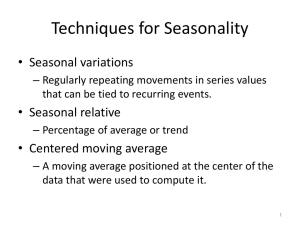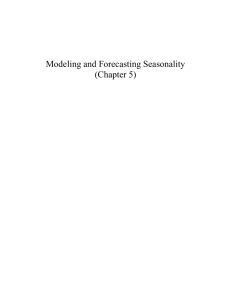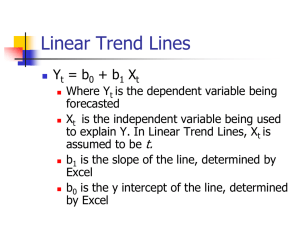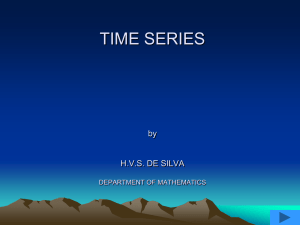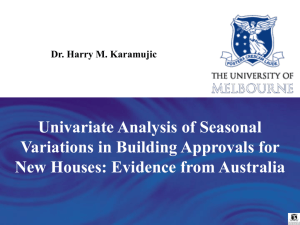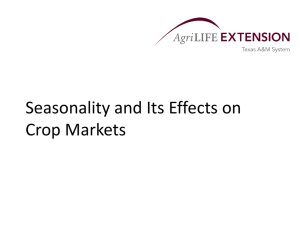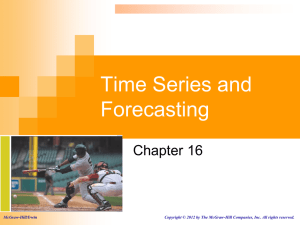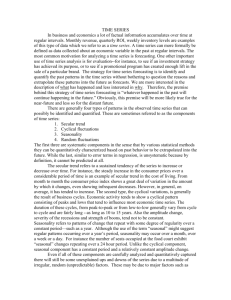Global warming impact on phytoplankton seasonal cycles
advertisement
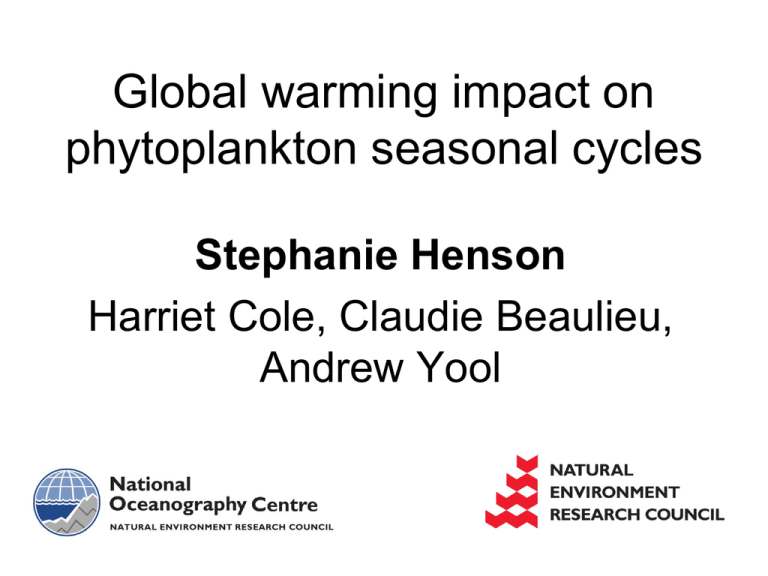
Global warming impact on phytoplankton seasonal cycles Stephanie Henson Harriet Cole, Claudie Beaulieu, Andrew Yool Motivation • Seasonal cycle of phytoplankton is relevant to higher trophic levels and carbon export • How will phytoplankton seasonality change with global warming and why? • A previous study suggested it takes ~ 30 years to detect a global warming trend in primary production • Could seasonality be a ‘shortcut’ to detecting effects of climate change? How will global warming alter seasonality? Reduced mixing + nutrient limitation -> weaker seasonal cycle Reduced mixing + light limitation -> seasonal cycle remains & earlier blooms The canonical view (Doney, 2006) How will phytoplankton seasonality change with global warming? Take coupled climate model simulations using IPCC CMIP5 models run with the RCP8.5 scenario 2006-2100: • Canadian Centre for Climate Modelling and Analysis CanESM2 • NOAA Geophysical Fluid Dynamics Laboratory GFDL-ESM2M • Met Office Hadley Centre HadGEM2-CC • Institut Pierre Simon Laplace IPSL-CM5A-MR • Max Planck Institute MPI-ESM-LR • National Oceanography Centre NEMO-MEDUSA Phytoplankton seasonal cycle metrics Timing of peak Seasonal amplitude (max-min) North Atlantic seasonal cycle of primary production (GFDL model – monthly output) Trends in phytoplankton seasonality Primary production Seasonal amplitude Average % change per year, 2006-2090 Timing of peak Difference in days, 20062026 vs 2071-2090 Trends in phytoplankton seasonality Decrease in PP, except Arctic Decrease in seasonality, especially in North Atlantic Peak PP ~ advances, particularly Arctic Trends in drivers of seasonality Surface nitrate seasonal amplitude decreases almost everywhere Average % change/year MLD seasonal amplitude decreases everywhere except the Arctic ΔSST/year SST amplitude increases (highs get hotter quicker than the lows) SST MLD NO3 How much data is needed to detect a global warming trend? Signal (i.e. trend) has to exceed noise (i.e. natural variability) 2/ 3 3.3 1 * N n 1 n* : number of years required to detect trend N : standard deviation of the noise (residuals after trend removed) : estimated trend : auto-correlation of the noise (AR(1)) Weatherhead et al. (1998) Detecting a trend in phytoplankton seasonality Mean annual PP n* - Number of years to detect a trend above natural variability Mean PP – 34 years Detecting a trend in phytoplankton seasonality Mean annual PP Seasonal amplitude of PP n* - Number of years to detect a trend above natural variability Mean PP – 34 years; seasonal amplitude – 37 years Effect of model temporal resolution • Used monthly mean model output here • But phenological changes may only be observable at higher temporal resolution • How does changing the model temporal resolution alter n* (number of years to detect trend)? Ongoing work (Harriet Cole) Effect on n* of calculating trends in bloom initiation with different model temporal resolution Conclusions • Seasonal amplitude of PP decreases; timing of peak advances transformation of bloom regions to non-bloom regions • Due to decreased mixing and nutrient supply • Arctic is an exception: increased seasonality and earlier peak, but reduced mixing effect of ice melt? • Seasonality metrics are not necessarily a shortcut to detecting a trend • For some regions > monthly resolution data required to detect phenological change Henson et al. (2010); Beaulieu et al. (2013); Henson et al. (in press) – all Biogeosciences
